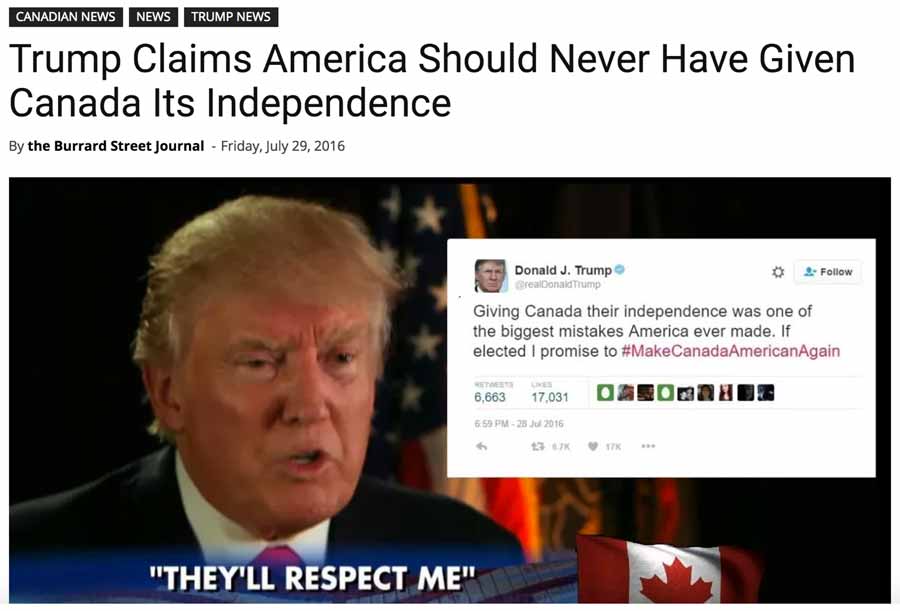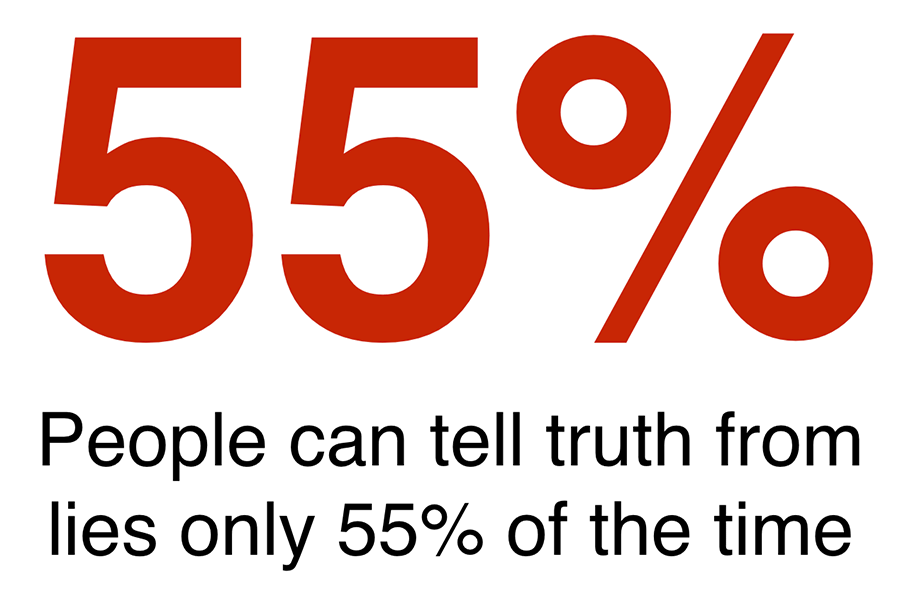How Fake News and Influencers Are Created and Promoted Online
Remember when former President Donald Trump said, “America should never have given Canada its independence”? Well, that was fake.
Fake news has a long and storied history that continues right up to this day with the Russian war on Ukraine. Hundreds of years ago in the United States, Benjamin Franklin spread propaganda stories by creating a fake issue of the Boston Independent Chronicle.
Today celebrities, politicians, and everyday people are affected by false information online. Tomi Lahren of Fox News was quoted as saying:
“If you die in a mass shooting, it’s not the fun’s fault, or even the gunman’s fault. It’s your fault for not believing in God enough“.
She didn’t say that either.

As the NY Times has reported, there are even awards for fake news now.
Governments love fake news because it’s very difficult to get caught. In fact, it’s so tough to get caught it takes the US Government to track down perpetrators like the Internet Research Agency in Russia. Today, with the war in Ukraine, fake news outlets are spewing rumors that the war is a hoax, and even saying that hospital bombings were fake.
It’s not just governments, though; fake news is profitable. You may remember one story from years ago that led with “BREAKING: “Tens of thousands of fraudulent Clinton votes found in Ohio warehouse” made its creator about $5,000. It took only minutes to create but was shared six million times.
In another example, a teen in Macedonia made $60,000 in a month, creating fake content during the 2016 US Presidential Election.
 But people can only tell the truth from lies about 55% of the time. Of course, no one wants to believe that; we all want to think we have a special gift that enables us to see through the veil of lies.
But people can only tell the truth from lies about 55% of the time. Of course, no one wants to believe that; we all want to think we have a special gift that enables us to see through the veil of lies.
Unintended consequences of social media and search
Social and search technology is specifically designed to feed us the information we want to see. Some call it an echo chamber or a bubble. It’s a self-reinforcing loop of information that we agree with. Social technologies rely on the fact that we tend to agree with like-minded people. In other words, we tend to agree with what our “tribe” believes.
We also believe what we already believe – this is called “confirmation bias“. Confirmation bias is our tendency to believe information that confirms our existing beliefs. The echo chamber in our heads interacts with the larger echo chamber of social media and search results.
 Fake news works because people want to believe it. It’s incredibly difficult to change someone’s mind. The famous quote by Dale Carnegie “A man convinced against his will, is of the same opinion still,” holds true.
Fake news works because people want to believe it. It’s incredibly difficult to change someone’s mind. The famous quote by Dale Carnegie “A man convinced against his will, is of the same opinion still,” holds true.
Why do we share fake news?
The act of sharing something interesting makes our friends think we’re cool. We receive a form of social stock for doing so. Social media companies like Facebook and Twitter leverage this aspect of human nature to get us to share things.
Unfortunately, fake influence publishers understand human psychology too and use it to great effect.
Another important reason we share fake news is emotion. The angrier content makes us, the better it performs in social and search results. By adding confirmation bias with negative emotion, fake news peddlers can make content “go viral”.
Negative information triggers something called Negativity Bias. You can read more about negativity bias here.
How stakeholders are compensated
Generally speaking, the people and groups that create fake content either do it for money or for political influence. But the creators of this content are only part of the ecosystem.
It is in the commercial interest of companies like Facebook, Twitter, and Google to help bad actors, although inadvertently, because shared content is inherently more profitable. It is in the commercial interests of many publishers to make us angry and cause divisiveness because it drives more clicks, but along with clicks comes advertising revenue for social media and search companies.
How to create fake news
At this point, you are probably thinking, “how can I create fake news?”. Well, you’re in luck; this is how you do it.
- Create a clickbait headline. According to Endgadget, “Preposterous stories are inherently more clickable than believable ones”. For example” “WikiLeaks confirms Hillary sold weapons to ISIS”.
- Using a compelling image, even if not really associated with the headline, will add believability and help your fake news perform better in search results.
- Use the “Rule of Two”. For fake news to be believable, it is helpful to have other corroborating online evidence. It doesn’t have to be that accurate because most people will believe what they want to believe, whether it’s true or not.
- Get fake people to share your fake news. Influencers and followers are the name of the game. You can buy followers and tweets online cheaply. These fake people are called “sock puppets.” Once you have posted your fake content, enlist your army of fake people to share it. This is best accomplished using a bot network like the ones Russians used during the US election (and still do today).
Where do you get followers and bots? You buy them on the Darknet or sites like Black Hat World or on the DarkNet.
Should you create fake news? No (you had to ask?). But you should be aware of the mechanics behind fake news. Ryan Holiday once said, “You cannot have your news for free; you can only obscure the costs.” he was right.
Fake News FAQs
What is fake news?
Fake news is information, especially in espionage or propaganda, disseminated as a response and opposition to other information.
Why do people share fake news?
People love to share fake news because it appeals to emotion. A combination of confirmation bias, negative emotions, and the ever-growing search to gain clout has made fake news one of the most popular types of viral content.
How can I create fake news?
Create a clickbait headline. Use a compelling image. For fake news to be believable, it is helpful to have other corroborating online evidence. It doesn’t have to be that accurate because most people will believe what they want to believe, whether it’s true or not. Get fake people to share your fake news.
About the author
Kent Campbell is the chief strategist for Reputation X, a San Francisco Bay Area-based online reputation management services firm. He has over 15 years of experience with SEO, Wikipedia editing, review management, and online reputation strategy. Kent has helped celebrities, leaders, executives, and marketing professionals improve the way they are seen online. Kent writes about reputation, SEO, Wikipedia, and PR-related topics.
–
Tags: Online Reputation Repair.
